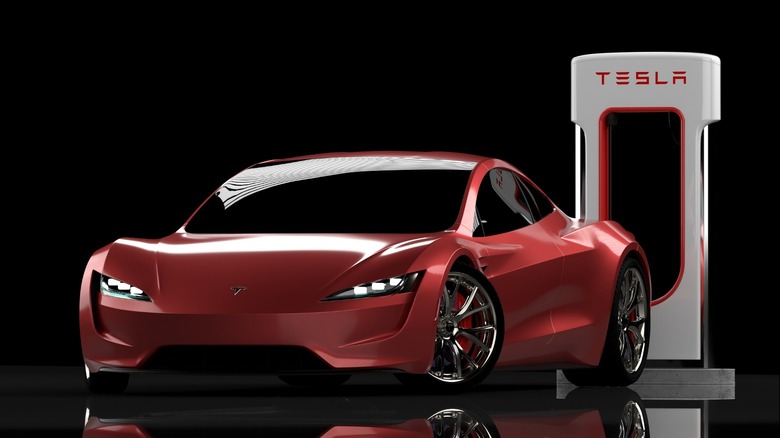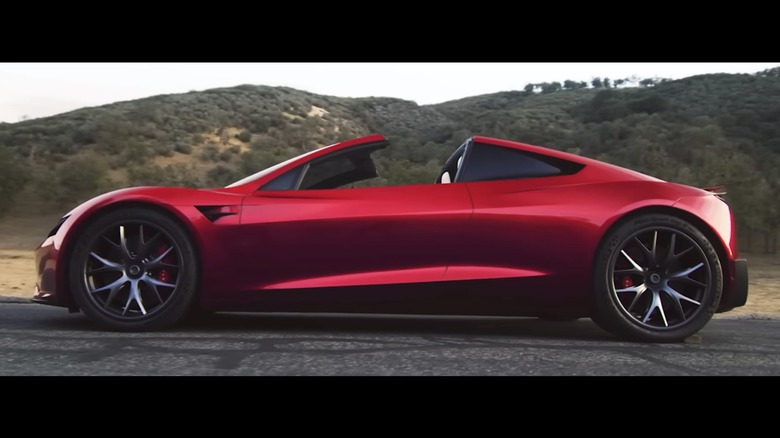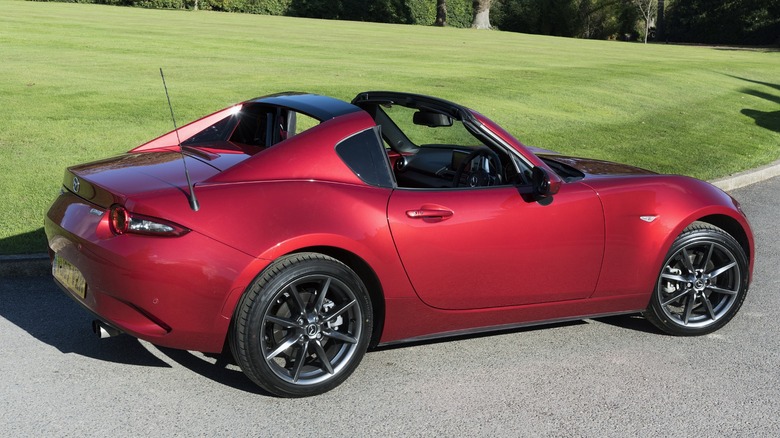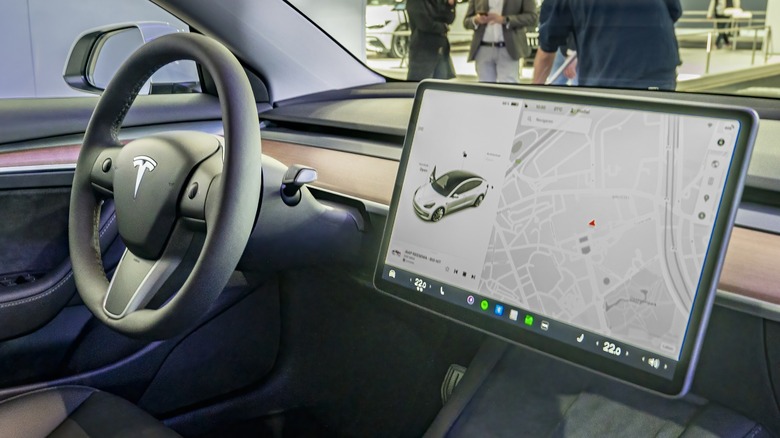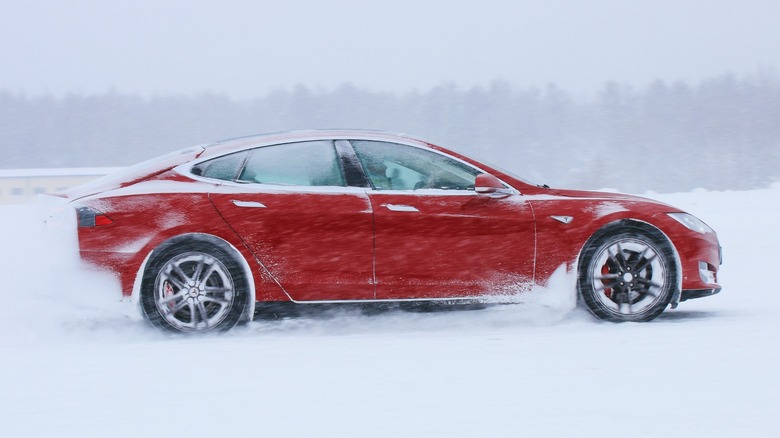4 Features We'd Like To See On The New Tesla Roadster
The Model S put Tesla on the map, but the original Roadster was the first EV model that Tesla sold. The 2008 Roadster is considered such an important part of Tesla's history that its first prototype was auctioned starting at a million dollars in 2016. Nevertheless, the Roadster ended production in 2012 after the company used up 2,450 Lotus Elise shells.
Elon Musk has began teasing the new Tesla Roadster way back in 2011, when he said in an interview with Autocar that a new model would arrive in 2014. However, it wasn't until 2017 that we saw its first prototype in the metal appear as part of the Tesla Semi reveal. And by 2024, ten years after the initial return date Musk announced, the new Roadster hasn't arrived yet.
Nevertheless, Musk tweeted an update on the Roadster in February 2024, and he even claimed that shipping for the long-delayed sports EV will begin next year. While we always take Musk's tweets with a grain of salt, we're still excited when the Roadster will start rolling out of Tesla factories and into our driveways. In the meantime, we'll share some features we'd like to see on the 2025 Tesla Roadster.
Power-Folding Hard Top Roof
The new Tesla Roadster has a removable glass roof, similar to the Lotus Elise on which the first-generation Roadster was based. While the option to get the wind in your hair is definitely a plus, we expect a sports car that's expected to start at $200,000 to give you all the convenience options in the world.
So, we hope that Tesla gives the new Roadster a power-folding roof option. That way, you can get the glass roof out of the way with just a button while cruising down the highway. After all, if the 2021 Mazda MX-5 Miata RF, which started at about $33,000, has it, then maybe the Roadster should have it.
There are good reasons to argue for a retractable roof on the Roadster. After all, the Roadster does not have an internal combustion engine, so it's not like the car wouldn't have enough space. And even if the retractable roof mechanism would take up too much space in the trunk, Tesla has a frunk to make up for it.
A Smaller Two-Seat Version
Tesla unveiled the new Roadster with a 2+2 seating configuration. While this is great if you want to carry passengers, the Tesla Roadster isn't really meant for transporting people. It's a car you buy to have fun on the road and on a track.
If it's not too much to ask, we hope that Tesla will create a smaller Roadster with a strictly two-seat configuration, much like the first-generation Roadster or the Mazda MX-5 Miata. A smaller two-door sports EV would likely be faster and more agile, adding more smiles to the miles. It's worth noting that it's no fun to be stuck in the back seats of these types of cars anyway.
Even if we get slightly less range owing to the reduced footprint of a two-seater Roadster, the reduced weight and dimensions will significantly add more fun to driving it. This is a trade-off that many would-be Roadster owners are likely willing to take, especially if it also means we can save a few thousand dollars on a more 'affordable' version of this EV.
More Buttons
One pet hate we have in modern cars is the lack of physical buttons. While a sleek, minimalist interior looks good, operating a touch screen is inherently unsafe while driving. Even if asking Tesla to change its design language is a long shot, we're still asking.
Perhaps the government can take steps to mandate physical, clickable buttons for the most used functions while we drive. This includes the horn, turn signals, hazard lights, and headlight controls. While not crucial to driving, we hope that HVAC controls go back to physical, too. After all, many drivers change the temperature while driving to feel comfortable. Even if the Tesla Roadster has an auto mode for its climate control, the ability to change your settings manually without looking at a screen would likely improve safety.
While we're talking about stuff Tesla isn't likely to do, we also wish that Tesla incorporate Android Auto and Apple CarPlay into the infotainment screens of its cars. After all, if you can open your Tesla with your phone, why can't you connect it to the large screen on the dash? The display on Teslas makes it the perfect candidate for running Android Auto and Apple CarPlay features while remaining relatively safe, and it would keep us from fiddling with our smartphones while driving.
Drift or Gymkhana Mode
Tesla claims that the Roadster can go from zero to 60 in less than 2 seconds, finish the quarter-mile in 8.8 seconds, and has a top speed of over 250 mph. The product page also says it produces 10,000 Nm of torque at the wheels. These impressive numbers give the Tesla Roadster extreme potential in motorsports.
While Teslas have many excellent driving modes, including the Ludicrous Plus and the Plaid Track Driving Modes, it's still missing Drift Mode. Tesla engineers could program this mode into the Roadster and only allow it to engage on private land or registered tracks for safety. But if Tesla could insert a driving mode for drifting this into the Roadster, then we could realize the potential of its massive power output.
If you want to go one notch higher, we'd like to see Gymkhana Mode on the new Roadster. EVs are perfectly suited for this type of activity, as Ken Block proved in the Audi S1 Hoonitron. If Tesla does implement this feature, we expect it to be an additional cost, but many people would gladly pay it for all the fun they could have.
